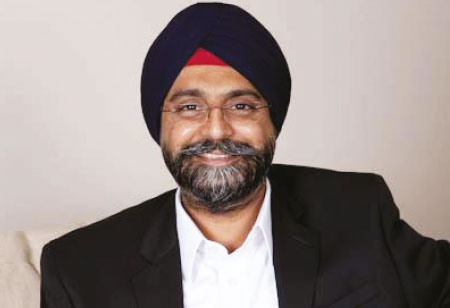Developing Leadership Bench Strength
By Gurprriet Singh, Senior Client Partner, Korn Ferry Hay Group

Gurprriet Singh, Senior Client Partner, Korn Ferry Hay Group
I was once asked how exactly I put on my trousers. I’d never been asked this before and the question took me aback, but I humoured the gentleman and thought about it (I had to visualize myself doing it!). So I told him I always start with the right leg first. Whereupon he asked me why I did it that way and how had I learned it.
Interesting question because I realized then, that I did it this way because that’s how my mom had put them on me when I was too little to wear them on my own.
"First time leaders play a key role in implementing strategy and reinforcing culture"
There are many habits, skills and behaviours that we learn early on in our lives and which get locked in. The way we tie our shoelaces, for instance, or how we show up at funerals or how we treat members of other genders or people younger or older than us. We are socialized by family, peers, the education system and the culture & society we grow up in.
This includes leadership. Many of us develop leadership habits, behaviours, attitudes and values early on in life when we are given our first leadership roles.
In my school, good students (the ones who scored well in exams) were appointed as class monitors. My first such appointment was when I was in 6th grade. I remember even now, how strong a disciplinarian I was during my first stint, not allowing even the tiniest .
leeway. I ended up being suffocating. A very illuminating counselling session by my class teacher helped me understand the importance of flex and boundaries of tolerance. I realized then that I had only been replicating the somewhat draconian style of control I experienced at home, where you had to comply or be punished.
When another monitor was appointed, this time I was watching and observing consciously. Comparing and contrasting my style to theirs, picking up what they did well. I was adding to my repertoire.
As we struggle in a dynamic and fast-paced world, to develop leaders, it’s vital to acknowledge that just as in life, in the corporate world also, behaviours, habits, engagement styles are all acculturated fairly early in the game.
The science of NLP and role modelling informs us that we are great mimics and adept at replicating what we experience or see. The term “blank slate” has tremendous relevance. Freshers join an organization as eager learners, willing to adopt/adapt all that we need to, in order to succeed and make a mark. Whatever is “written” onto us, then takes hold.
The first leader/manager you experience has a disproportionate and often indelible impact on your own beliefs about leading. You imbibe habits, behaviours and styles, some consciously and others unconsciously. Many of which, over a period of time become part of you and begin to define your approach to leadership.
However, many first time leaders receive very little conscious development and support as they transition into the complexity of managing people and moving from delivering to ensuring delivery through others. First time leaders play a key role in implementing strategy and reinforcing culture. All the organization’s strategy, customer experience, process and compliance is deployed by and through them.
The quality of service I experience at a store or a bank or an airline counter is directly proportional to the leadership exerted by the supervisor or manager of that team. The quality of product manufactured or service delivered is directly in their control. My submission then, is that we need to exert disproportionate energy, investment and rigour on developing first time managers.
And here’s what I think would be crucial inputs or interventions:
1. Helping them articulate the kind of leader they would like to be known as i.e. their leadership brand
2. Helping them develop a sense of the values that underpin leadership roles and responsibilities
3. Enabling them to understand the strategic underpinnings of the process and experience they need to deploy. They need to know the why and how it creates a competitive differentiation.
4. Developing a balance between ego and humility – ego to drive aspiration, perseverance and resilience and humility to enhance learning agility and manage hubris/arrogance
5. Skill building around:
a. Managing meetings
b. Facilitation
c. Resolving conflict
d. Counselling
e. Range of influencing styles
f. Prioritization
g. Delegation
h. Monitoring and reviewing to ensure delivery through others
i. Performance management
j. Crucial conversations
And this is just the first level of leadership which would be largely focused on managing down the line. Managing sideways, influencing seniors, influencing without authority, having an impact across functions, industry presence etc. will all follow.
It is these first time leaders who set the benchmark and establish norms of leadership for the generation of future leaders who advance up the organization.
This will only begin to happen when organizations review how they allocate budgets and also reframe leadership development methods and approaches. I have always said and will once again emphasize that the armed forces are exemplars in this area and we would do well to learn from them.
Leadership development has less to do with curriculum, training calendars and nominations. It has everything to do with approach, culture, involvement of leaders across levels and collective responsibility for developing new leaders.
If you want to develop a strong leadership bench, start at the beginning.




